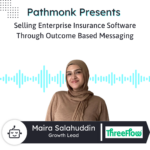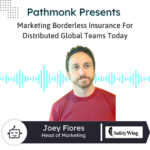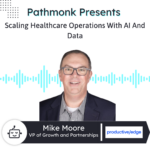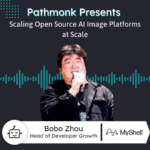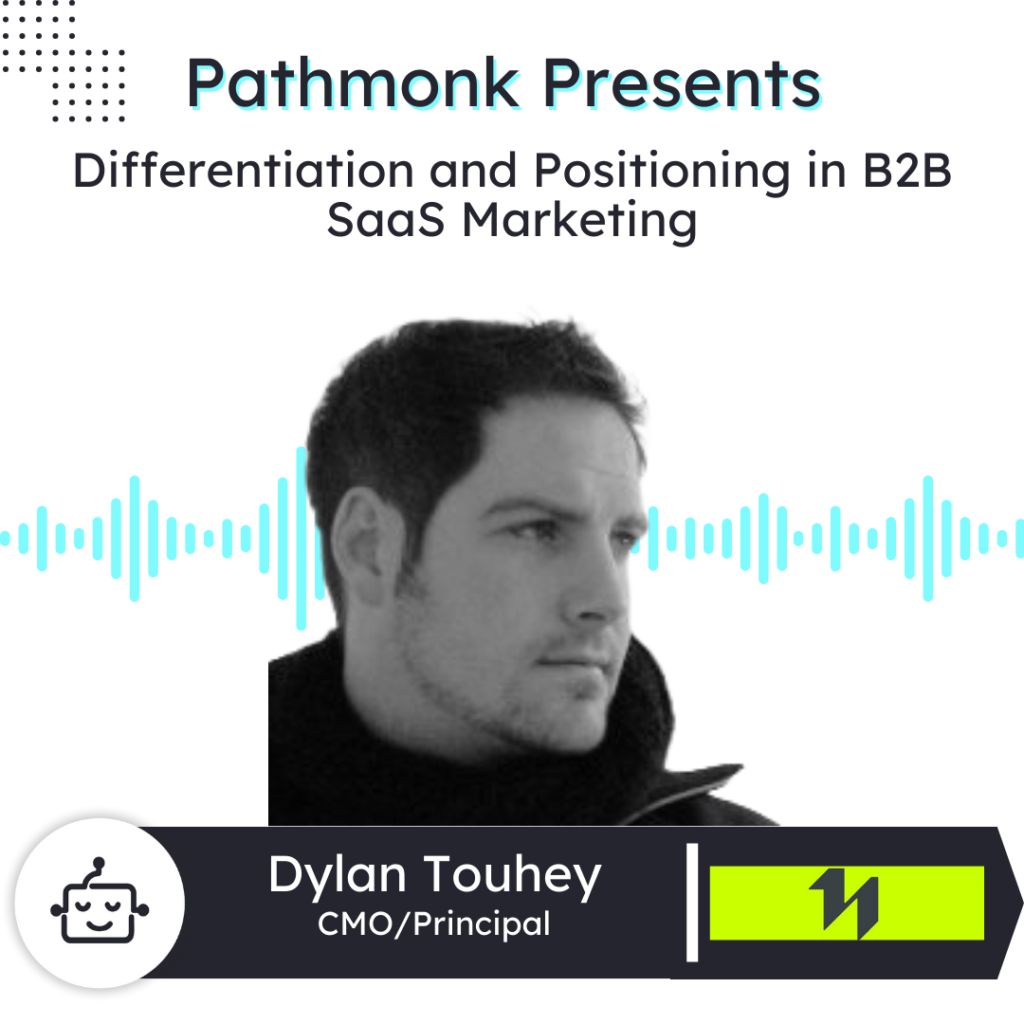
Introduction
In this insightful episode, we welcome Dylan Touhey, co-founder of One Net Inc., a creative and digital marketing agency specializing in B2B SaaS and enterprise tech.
Dylan shares his expertise on solving the crucial problem of differentiation and positioning in the highly competitive B2B SaaS market. He discusses One Net Inc.’s approach to client acquisition, the role of websites in enterprise sales, and his unique “Three M” management model.
Listeners will gain valuable insights into effective marketing strategies for SaaS companies, the importance of referral-based growth, and the fundamentals of successful digital marketing in the B2B space.
More Sales From Your Website With AI
Personalized interactions based on your users' behaviour to get +50% more conversions.
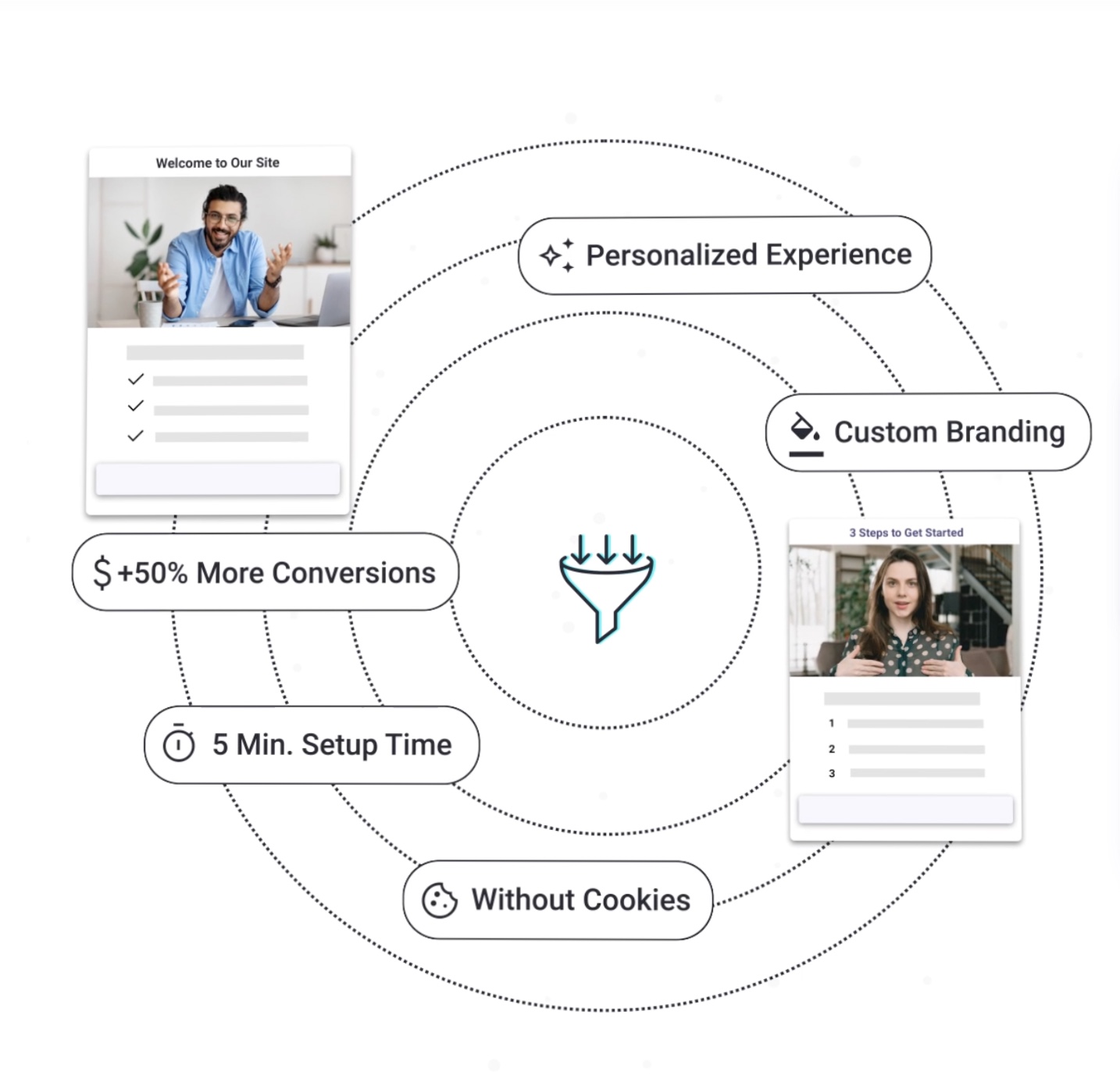
Ernesto Quezada: Pathmonk is the intelligent tool for website lead generation. With increasing online competition, over 98% of website visitors don’t convert. The ability to successfully show your value proposition and support visitors in their buying journey separates you from the competition online. Pathmonk qualifies and converts leads on your website by figuring out where they are in the buying journey and influencing them in key decision moments. With relevant micro experiences like case studies, intro videos, and much more, stay relevant to your visitors and increase conversions by 50%. Add Pathmonk to your website in seconds. Let the AI do all the work and get an extra 50% more qualified leads while you keep doing marketing and sales as usual. Check us on pathmonk.com. Welcome to today’s episode. We have Dylan, owner there at One Net Inc. How you doing today, Dylan?
Dylan Touhey: Yeah, good morning. I’m well, thanks.
Ernesto: It’s great to have you on and, well, I’m sure our listeners are tuning in, Dylan, wondering what One Net is all about. So, in your own words, tell us a little bit more.
Dylan: Yeah. Boring name. Big results. One Net is a creative and digital marketing agency primarily servicing B2B SaaS and enterprise SaaS companies. We’ve been around since 2007, and we’ve been focused on that clientele for the entirety of that timeline. We, to date, have generated about 550 million in attributed pipeline to our SaaS clients and our enterprise software clients. And the suite of services is full stack from brand right through to CRO. So we’re very wide in services as an agency, but very narrow in who we serve. So onenetinc.com and I am one of two principal founders at the agency. We’re located up near Vancouver, British Columbia, on the left side of Canada.
Ernesto: Perfect. All right. And so that way our listeners get a good understanding of One Net Inc., what would you say is a key problem that you guys like to solve for clients?
Dylan: Yeah, that’s a great question. At the end of the day, I think particularly in B2B SaaS and enterprise tech, all of our clients suffer from the same problem, which is a lack of differentiation and a lack of positioning in the marketplace. It’s very, very competitive. When you start slicing and dicing enterprise across the different verticals, we do a lot of work in app security. We do a lot of work in cloud computing. We do a lot of work in enterprise generative AI. I think at the end of the day, there’s a propensity for a lot of our clients to look the same and sound the same. As a result, the buyer cannot create a clear differentiation in their mind between alternative one, alternative two, and alternative three in the market. And that comes down to having a poor foundation for differentiation and positioning in the market. So typically, when we bring clients on, we always like to take them through a ground-level exercise to solve that problem. Because once that foundation is solved, once you can clearly differentiate in the mind of the buyer, then you can build all of your marketing collateral, websites, landing pages, campaigns, lead nurturing on top of that positioning without confusing the prospect and allowing them to clearly differentiate you from the dozen other competitors that you have within your market. I would say that is the number one problem that we solve as an agency.
Ernesto: All right, perfect. And so is there a vertical segment? Is there an ideal ICP that One Net likes to go for?
Dylan: Yeah, definitely very interested in enterprise generative AI, very interested in application or network security, and very interested in enterprise e-commerce. So our clients tend to be either within that vertical or close to that vertical. As far as ICPs go, most clients can’t afford an agency like One Net unless they’re doing between 50 and 100 million top line per year. So we use that as a qualification criteria from a monetary perspective. And then from a qualitative perspective, if our clients are not set up with an internal marketing department, in other words, they don’t have a marketing director or maybe they don’t have a marketing team and project managers, then that’s also a disqualification from our side as well. So put simply, 50 to 100 mil top line revenue, and a small to medium-sized marketing department that has experience working with agency partners. That’s an ICP for us, definitely. We are not bound to any geography. We serve clients from Australia, across Asia, Europe, and of course, North America in major tech markets.
Ernesto: Okay, perfect.
Dylan: Awesome.
Ernesto: And so then on that note, how would they usually find out about you? Is there a top client acquisition channel for you guys?
Dylan: It’s all referral. It’s 100% referral and has been since day one. We’ve built a seven-figure agency off the back of referrals and nothing else. So I think that’s a testament to good work. It’s also a testament to tech in general. What we find as part of that referral strategy, and it’s honestly a bit accidental, is when you work in technology, particularly with these mid to large-size SaaS companies and tech brands, their C-suite tends to churn about once every three years. The CMO, VP of sales. The C-suite lasts about three years. So what happens is we come on, do great work, and then the C-suite leaves to a competitor. They bring us with them and they leave us behind at the former company. And as a result, we’ve been able to grow the referral base just from the pure nature of high churn within the C-suite within our client set.
Ernesto: Okay, perfect. Awesome. Thank you so much for sharing that, Dylan. And so then that way our listeners who are tuned in could go ahead and visit you. They could always check you out at onenetinc.com.
Dylan: Yep. O N E. Yep, onenetinc.com or on LinkedIn.
Ernesto: What role does a website play then for client acquisition?
Dylan: For client acquisition, correct. Yeah, with our clients, again, when we talk about like, enterprise-level SaaS or enterprise-level tech, the website is more of a validation tool. And what I mean by that is typically B2B sales is, as the listeners and as you probably know, very much ABM based. Right. Enterprise sales happen offline. It’s cold calls, it’s cold outreach, it’s events, it’s networking. Nobody lands on a website for a $100,000 SLA product and fills out a demo request form on the first visit. It does not happen in this world. So validation means lower funnel. After an initial sales contact has been made, after an initial conversation has been made, then the website becomes validation for the decision-makers. And I emphasize the “s” in makers, because no enterprise sale happens in a vacuum with a single person. There’s typically a committee, a team evaluating these large purchases. And so the website serves the bottom of the funnel as an information center to validate that the product can do what the salespeople have promised. And that lends the website to becoming more of a sales, bottom funnel, content tool to help that decision. Committee, case studies, data sheets, use cases, all those good things to support the bottom of the funnel. So in our world, definitely the bottom of the funnel. And that’s why the websites tend to be large, and that’s why they tend to be international as well. Multi-language. So, a bit of a long-winded answer to your question, but hopefully that makes sense.
Ernesto: Yeah, it did. It did, definitely. And, well, let’s switch gears a little bit then, Dylan, and let’s talk about you as the leader. I mean, you’ve been in charge, being CMO as well. What are some key tasks you like to focus on in your day-to-day work?
Dylan: Yeah. So I have an internal strategy or I guess an approach to managing my day, which I call the three M model. So basically, the first part of my day is everything related to money, revenue. That’s for the agency as well as the clients. So most of my tasks will fall under making more money for the clients, which inherently means making more money for us. So what does that actually mean in practical tactical? It means ensuring that our websites or launching, converting, making sure that the ad campaigns are optimized for target CPAs, and so on and so forth with the team around me. So that’s the first M. The second M in the three M model that I’ve invented is margins. So this is internal, operational. I’m always looking to improve our net profit margins at the project level as well as the company level. So, looking at unnecessary expenses, looking at resource redundancies internally, with the team, et cetera, et cetera. And then the third M in that framework is management. So, leading people, helping to grow people through internal and external education, managing any problems. You know, we’re a human-powered service. At the end of the day, we do have underlying technology that helps us achieve, you know, customer acquisition and lead gen for our clients. But at the end of the day, we’re humans, and humans need leadership. And that’s the third part of the day, the third M in that three M management model. So that’s how I segment my day every single day of the week. So definitely.
Ernesto: Okay, perfect. And, well, let’s jump into our next section then here, Dylan, which is our rapid-fire question rounds. Are you ready for them?
Dylan: Go ahead. Yeah.
Ernesto: Perfect. Awesome. First off then is, what is the last book that you read?
Dylan: Oh, Hundred Million Dollar Leads by Alex Hermosi.
Ernesto: Okay, great read there for our listeners. Next up then is, if there would be no boundaries in technology, what would be that one thing that you want to have fixed for your role as a marketer today?
Dylan: An AI that can take a messy webpage and make it look aesthetically pleasing. A one button inside of WordPress or inside of the CMS that just makes an ugly page cobbled together by a blog team look beautiful.
Ernesto: So I think if that happens, there’s going to be really nice for a lot of agencies out there. Perfect. Then next is, if there’s one repetitive task that you could automate, what would that be?
Dylan: Follow-ups and reminders. We live in a world of dependencies. We live in a world of people who are overwhelmed, their job roles and responsibilities are ever-increasing, which means that the frequency of communications and reminders are critical. And now there’s a ton of tools out there that will resend the same email over and over and over until it gets a response. But I think, if you were to take that to the next level and have a tool that reminded clients, reminded staff of what was due or what was needed to unblock another team member, but tweaked it so the message was different every time, I think that you’d probably have a winning application right there and you’d probably be like the next Slack. So I would definitely love a tool like that.
Ernesto: Yeah, I think everybody, right. I think that would be really useful for a lot of industries. So awesome to have something like that.
Dylan: No one likes repetitive spam, but if you rephrase the message six different ways, hopefully by message six, there’s a response.
Ernesto: Definitely. All right, perfect. And well then lastly, Dylan is, I mean you have a lot of experience already in the marketing world, but what is that one piece of advice that you would give yourself if you were to restart your journey as a marketer today?
Dylan: Yeah, I love that question. So I think that the marketing world, and particularly the digital marketing world, is opaque and unnecessarily complicated, and driven by a lot of people with a lot of opinions and very little experience. And what that leads to is a lot of information on the web, whether it be on LinkedIn or Reddit or any other forum, of just bad, bad, bad advice, confusing advice. And then on top of that, there are layers and layers and layers of marketing tech, there are layers and layers and layers of advertising platforms and alternative distribution for media. It’s very confusing. So if I had advice for my 22-year-old self coming out of university, getting into digital marketing, it would be just to focus on the basics and the fundamentals, which really haven’t changed since the early days of print media. They still work today in a digital context. So the fundamentals of hook story offer, as it pertains to advertising, the fundamentals of positioning and differentiation. Like I talked about off the top of the call, the importance of building a brand over the long haul. You know, as B2B lead gen, we always focus on just filling CRM pipelines. But you can’t do that if you don’t have any brand awareness in the marketplace. At least it’s extremely hard to do. So, just understanding the fundamental levers in marketing and applying that to digital and almost ignoring a lot of the bad advice and the noise in the marketplace. I think that would be the advice I’d have for my 22-year-old self, for sure.
Ernesto: Definitely. Okay, perfect. Some great advice there. Not just for you, but for a lot of listeners out there starting off in the marketing world. And, we are coming to the end of the show here today, Dylan. But before we do end, I do want to give you the last word. If someone forgets everything about the interview today, what is that one thing they should remember about One Net Inc.
Dylan: I think One Net Inc. Is an agency that will tell you no and tell you that you have to build that foundation that we talked about off the top of the call. And it all starts with proper positioning and differentiation. And all marketing, all customer acquisition, all lead generation, all retention campaigns cannot be done successfully until you solve that fundamental differentiation. And I think that’s what we do best. And we build everything on top of it. And as a result, we’ve delivered more than $500 million in revenue to our clients. So I would definitely say positioning, differentiation is the core value of what we serve, what we deliver over here. And that would be the number one takeaway for One Net Inc. Definitely.
Ernesto: Hey, well, Dylan, thank you so much for being on with us today and to our listeners, thank you so much for tuning in. I’m looking forward to our next episode at Pathmonk Presents. Thanks.
Dylan: Great work. Thank you very much.




